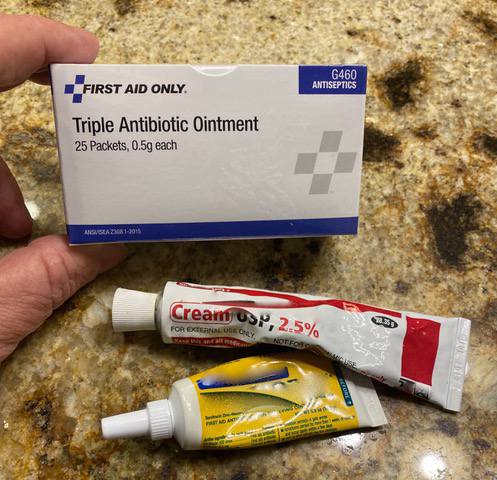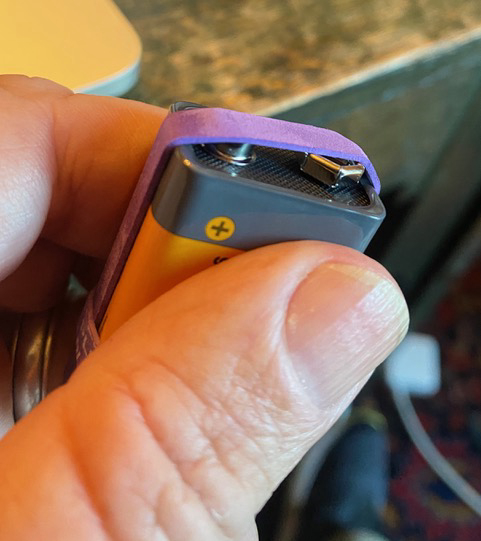As we watched our late summer turn into a suddenly frosty fall, we realized there were still plenty of preparedness things we’d let slide over the summer.
Sometimes, it takes uncertainty to make us realize there are gaps in our prep work. If there’s one thing everyone will agree on, it’s that 2020 has had enough uncertainty for everyone.
Replenishment of our first aid gear and the refreshing of our battery powered devices were the two most obvious things we’d let slide through the proverbial cracks.
And a long summer of bumps, scrapes, cuts, stings and reactions have definitely depleted our household first aid kits. A replenishment was in order.
The COVID-19 lockdowns preserved the gear in our auto-based first aid kits, but that doesn’t mean you shouldn’t check supplies in all your first aid kits.
When I checked my car kit, I’d crushed one of the “glow stick” emergency lights by carelessly tossing something on it. A glow stick that won’t glow isn’t much use. So it was replaced. Everything else was untouched.
In our household kits, however, we’d used a lot of supplies. Mostly the common items across all the kits: antiseptics, cleaning towelettes, sting relief cream, alcohol pads, wipes, band-aids (a LOT of those in a variety of sizes), cotton swabs, and antiseptic creams. They were easily replaced by a couple of bulk buys.
Here’s a hint that can keep you from tossing tubes of expired antiseptic creams: buy packages of individual doses. You may pay slightly more as opposed than larger tubes, but you’ll have significantly less waste.

Fortunately, we hadn’t touched the more serious dressings. Your kits will likely be the same. If you’ve used all your larger bandages, you might want to consider reviewing your safety practices while replenishing your first aid kits.
We have adequate AC/solar chargers to keep our rechargeable devices fresh, but we still have a lot of devices that use specialized batteries. From radios and flashlights to laser sights to range finding binoculars, the modern outdoor life is battery powered. And not all those are available in rechargeable.
In a long period of instability, you will quickly realize the “modern outdoorsman” is really going to be reduced to a less-modern status if/when batteries run out. And as good as batteries are today, they’re not going to last forever.
I re-learned a couple of things during my little exercise.
There’s entirely too-much variety in my battery variety. I totally get - now- why the military has put such emphasis on “shelf-ready technology”. If you need 1/3 N batteries, you’re not likely to find them in your average convenience store.
AA and AAA don’t pose big challenges, but even they can be very problematic - and expensive - in emergencies. Buy them before you need them. Keep spares, but make certain they’re performing close to their peak before installing them. Otherwise, you’re tempting fate.
Batteries bought in bulk and in advance, are considerably cheaper than those fancy little packages hanging in the retail aisles.
For “expendables” - those items you will use, then recycle, it also makes far more sense. You either have a ready supply on hand, or know to re-order.

Consider 2032 wafer-style batteries (used in many optical sights, lasers, and rangefinders). Bulk buying lots of 100 costs only slightly more than six two-packs at retail. Same deal with the CR123 batteries that power flashlights, lasers and other high-tech optics.
Buying bulk saves serious money in the long run - and enables you to initiate a scheduled maintenance/refresh program on your calendar. Yes, it’s OK to remind yourself to check batteries before you actually need the device they power.

Here’s a lesson you don’t want to learn the hard way: If you’re storing 9-volts, either put a piece of electrical tape across or a rubber band over the terminals. Otherwise, you have a fire hazard.
Accidentally shorting a 9-volt battery by dropping it into a pocket with other metal (think coins, knives, ammo, tools) is an enlightening experience.
But it’s also the basis for a solid a survival tip: if you have a 9 volt battery and some steel wool, you have a dandy fire starter. Separate the steel wool into a “fuzz” then put the battery terminals of the 9 volt battery against it. It will flame up more than enough to start a fire.
Try it. It’s one of those tricks that might help you in a tight situation one day.
These are all small things, until there’s a BIG need.
—Jim Shepherd